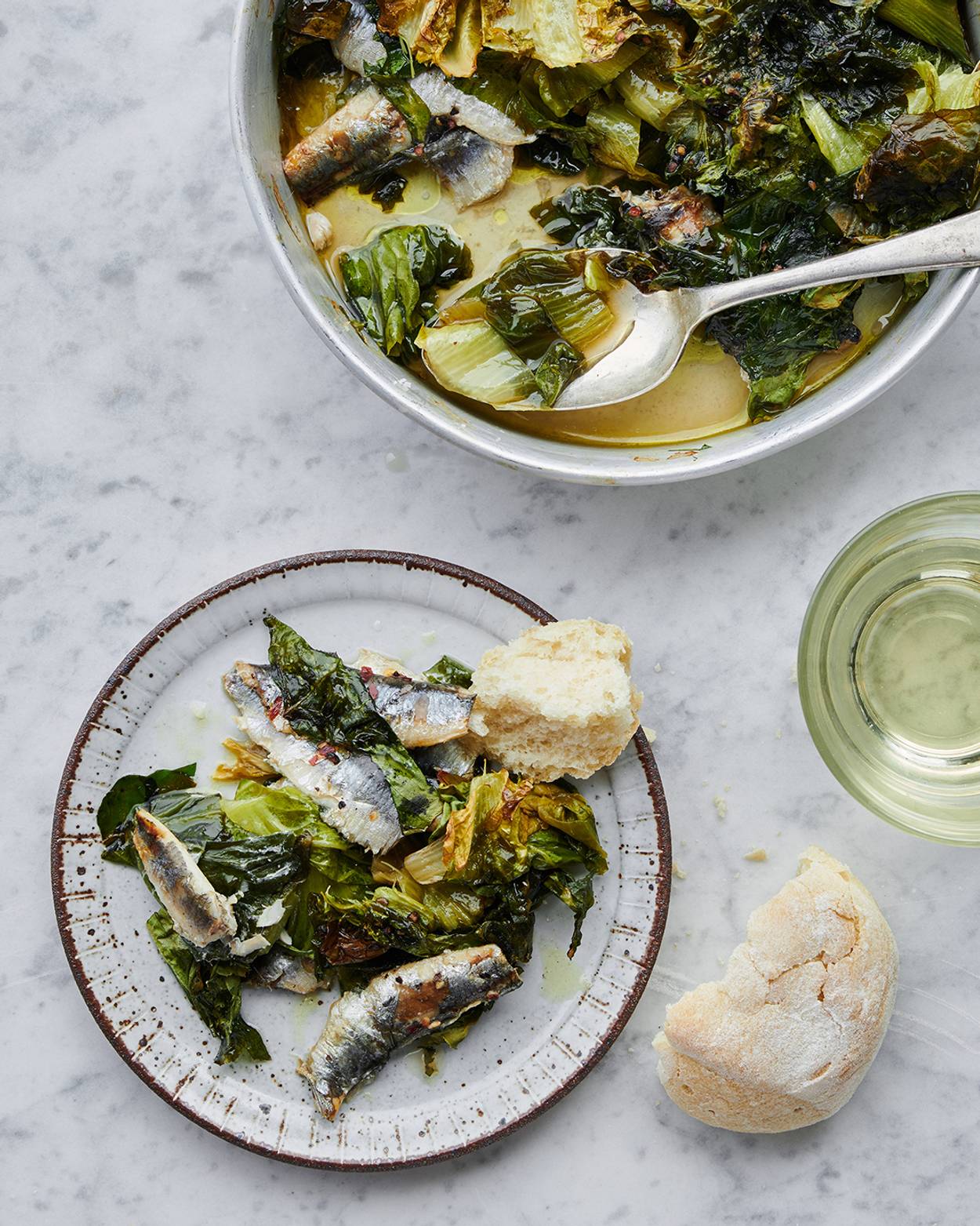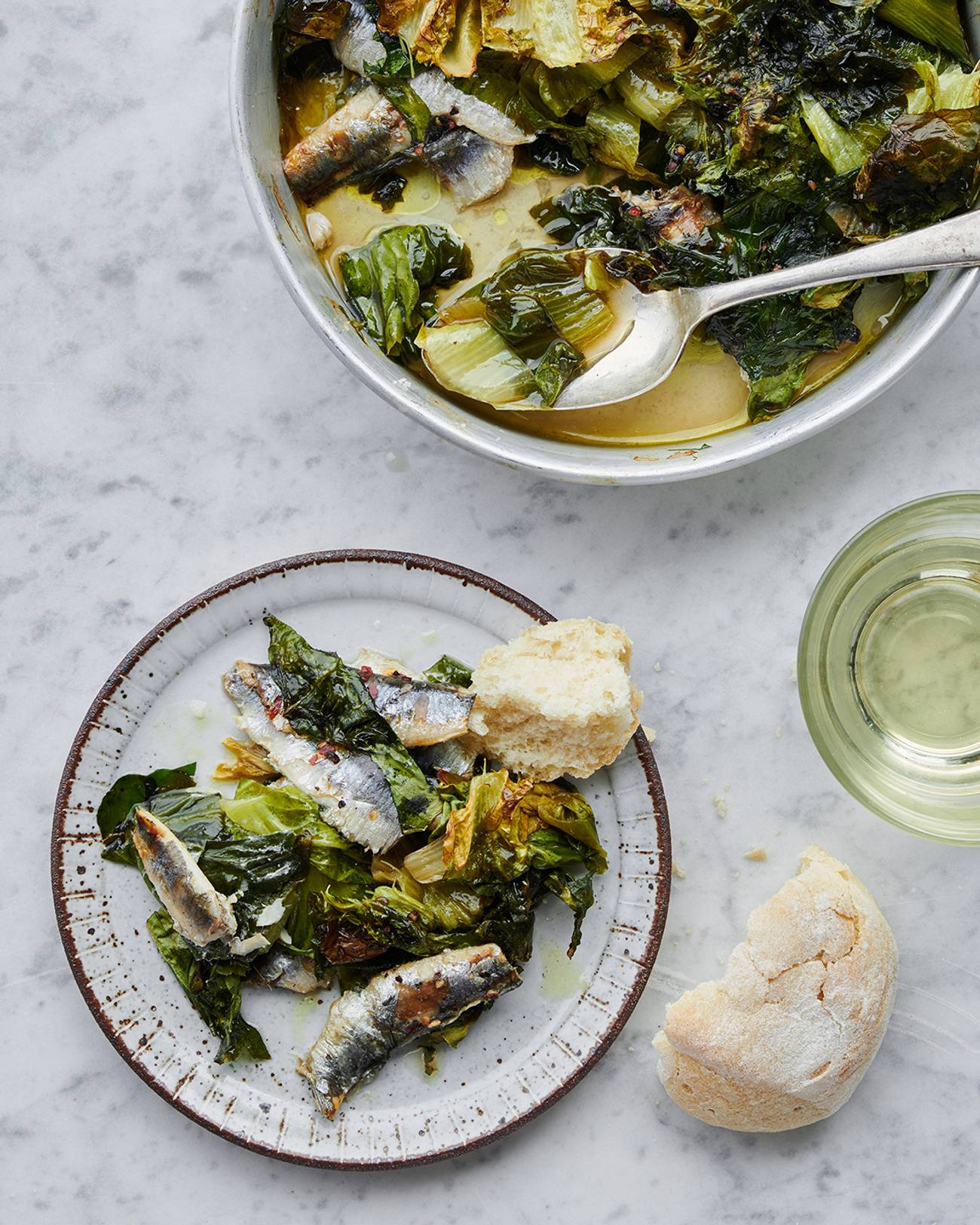Cooking Under Pressure
How the Jews of Rome turned hardship and oppressive regulations into enduring culinary delights




A famous Jewish joke says that most of the events we commemorate on our holidays can be summarized in one simple sentence: “They tried to kill us, they failed, let’s eat.” This attitude has seen our ancestors through every form of oppression and persecution that the Jews have experienced across the centuries, all over the world. It doesn’t matter how much they try to harm us, we will make the most of our circumstances, however dire they may be—and we’ll end up with something delicious.
A prime example can be found in the history of Jewish Italian cuisine.
Jews arrived on the Italian peninsula back when it was united as the Roman Empire; during the Jewish-Roman wars, beginning in 66 BCE and spanning 70 years, thousands of Jews were taken back to Rome as slaves, an event depicted on the city’s Arch of Titus. Their numbers swelled to over 50,000 in the first century CE, when they occupied urban centers and port towns, often earning their freedom and becoming merchants. However, when the Emperor Constantine decriminalized Christianity in 313 CE and subsequently converted, he paved the way for central Italy to become what it is today: the seat of the papacy.
The Roman Empire’s collapse created a number of separate states. Each state treated its Jewish citizens differently, but over time, a pattern emerged: that of ghettoization. Venice was the first city to restrict Jews to a ghetto in 1516, followed by Rome, where Jews were constrained to a ghetto in 1555 under a decree by Pope Paul IV. Cum nimis absurdum was a papal bull requiring Roman Jews to be segregated and to identify themselves with blue items of clothing. It also restricted property rights and the learning of skilled trades, forcing Jews into unskilled jobs as pawnbrokers, moneylenders, secondhand dealers, and “rag men.”
The Roman ghetto was located in one of the most undesirable quarters of the city, subject to constant flooding from the Tiber river, near the old fish market. At this time there were about 2,000 Jews living in Rome and their living conditions in the ghetto were terrible, with many barely surviving in extreme poverty, due to the restrictions enforced on them. The hardship, however, did not discourage the Roman Jews. The women of the ghetto, demonstrating that necessity is truly the mother of invention, made the most out of their difficult situation. They went to the fish market after it closed, collected all the heads and tails and leftovers that the fishmongers had disposed of, and boiled them to make a soup. That is the humble origin of zuppa di pesce (fish soup), a dish that is now considered a local delicacy and a staple in the Jewish quarter in Rome, appreciated by locals and tourists alike.
In 1661, the local authorities, in the person of Domenico Zauli, bishop of Veroli and vicar general of the Diocese of Rome, had the rabbi and the administrators of the Jewish community of Rome set some strict sumptuary rules, or laws about luxury, to limit and restrict—supposedly on moral grounds—any extravagance in food and clothing within the community. These bizarre rules that the Catholic authorities wanted to enforce on the Jews had little to do with luxury and much to do with abuse—they really just seemed aimed at further limiting the freedom of the Jews.
Among the regulations contained in the sumptuary rules, many were about food. What could be served at a wedding reception, which pastries could be gifted to a new mother, which specific type of cookie could be had at a brit milah … the options were limited to almost nothing, so that the Jews would not take any pleasure or enjoyment, however small. Two strikingly odd rules applied to salads and fish: Jews could not eat “rich salads,” meaning leafy green dishes featuring other ingredients such as eggs or cheese. They could only have plain lettuce, endive, chard, and wild herbs. As for the fish, Jews were only allowed “anchovies and blue fish,” the latter being, in Italian, a category that includes small, lower quality, inexpensive varieties that are net-fished in large amounts such as sardines, mackerel, and herring. The Jews were not disheartened. They took some of the ingredients they were allowed to use—namely, curly endive and anchovies—layered them in a baking dish, topped them with good Italian olive oil, salt, and pepper, and made aliciotti con l’indivia, a delicious dish that is also served to this day in every restaurant in the ghetto.

But regulations continued to be placed on the Jews of Rome. In 1775, Pope Pius VI came up with another peculiar rule to complicate Jewish daily life. This time the object of the regulation was milk, which Jews could only buy for their own consumption in small quantities, but not sell to others, especially to Christians, in any form: cheeses, custards, baked goods, etc. That’s when Jews started to bake cheesecakes covered with a flat layer or a tight lattice of pastry dough, so that nobody could see that the filling under the pastry was indeed cheese.
These are just a few of the fascinating stories about Italian food that can be uncovered by looking in depth at the dusty recipe notebooks of Italian Jews. The stories behind these recipes show how, against all odds, even oppression and poverty can, over time, give rise to some extraordinarily delicious food, and prove how the Jews have never given up enjoying and celebrating the pleasure of life—such as good food—even when things were rough, making limonata, so to speak, out of every lemon that was thrown at them.
Benedetta Jasmine Guetta is a food writer and photographer based in Milan. She runs Labna, the only Jewish/kosher cooking blog in Italy, specializing in Italian and Jewish recipes. Her latest book is Cooking alla Giudia.